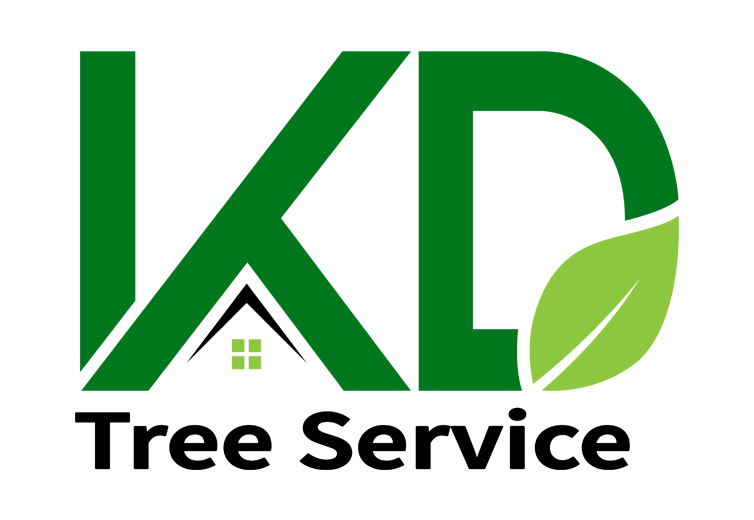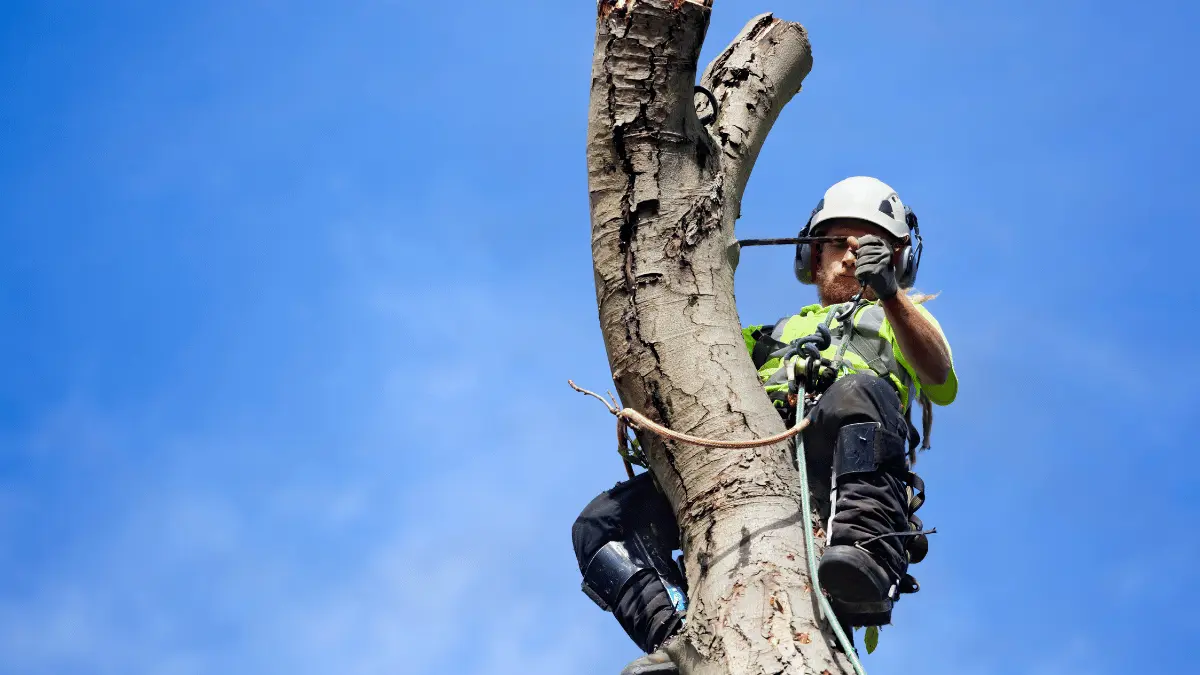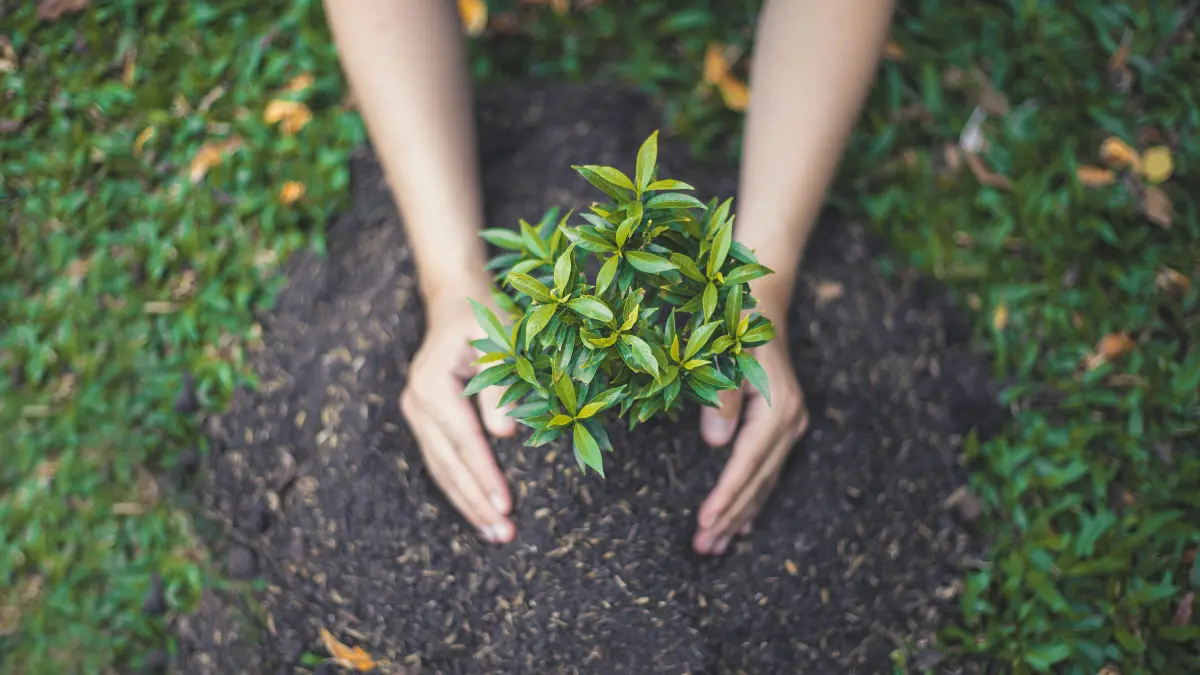Large trees can be a lovely addition to any property, but they may need to be removed for safety, disease, or other reasons. In this blog post, we will look at practical ways for removing huge trees without causing damage to your property.
Removing huge trees requires careful planning, professional skill, and adherence to safety rules. By taking the proper steps, you can ensure a successful tree removal process.
Cutting down trees appears simple, and it can be, but if not done correctly, it may be dangerous and time-consuming
Here is a Step-by-step guide to removing a tree without damaging your lawn or home
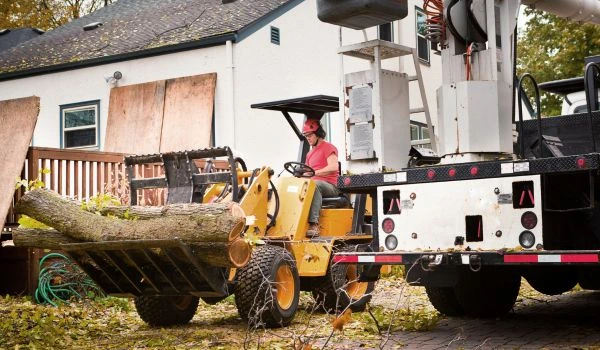
Tree Health Evaluation
Before removing a huge tree, check its health. Look for evidence of illnesses, decay, or structural damage, such as hollowed areas, fractures, or leaning. If the tree poses a risk to people or structures, removal may be necessary to prevent accidents or property damage. To determine the best course of action and assess the tree’s condition, you should also think about speaking with a qualified arborist or tree care professional. Not only that, they will help you in tree cutting without damaging the surrounding property.

Tree removal equipment
Chainsaws and Safety Gear
Having the proper equipment is essential for safe tree removal. Chainsaws are widely utilized, but safety gear is equally crucial. Arborists use helmets, eye protection, and chainsaw-resistant clothing to avoid injury. Additionally, sturdy gloves and boots provide protection against cuts and impacts. Prioritizing safety equipment guarantees that arborists can operate efficiently while lowering the chance of accidents during tree removal operations.
Ropes and Rigging
Professionals utilize ropes and rigging techniques to direct the tree’s fall direction. This lowers the chance of property damage. Learn correct rigging techniques and how to secure ropes effectively. Rigging techniques include carefully placing ropes and pulleys to regulate the tree’s descent. This helps to guarantee that the tree falls exactly where it should, limiting the risk of damage to nearby structures or landscape elements.
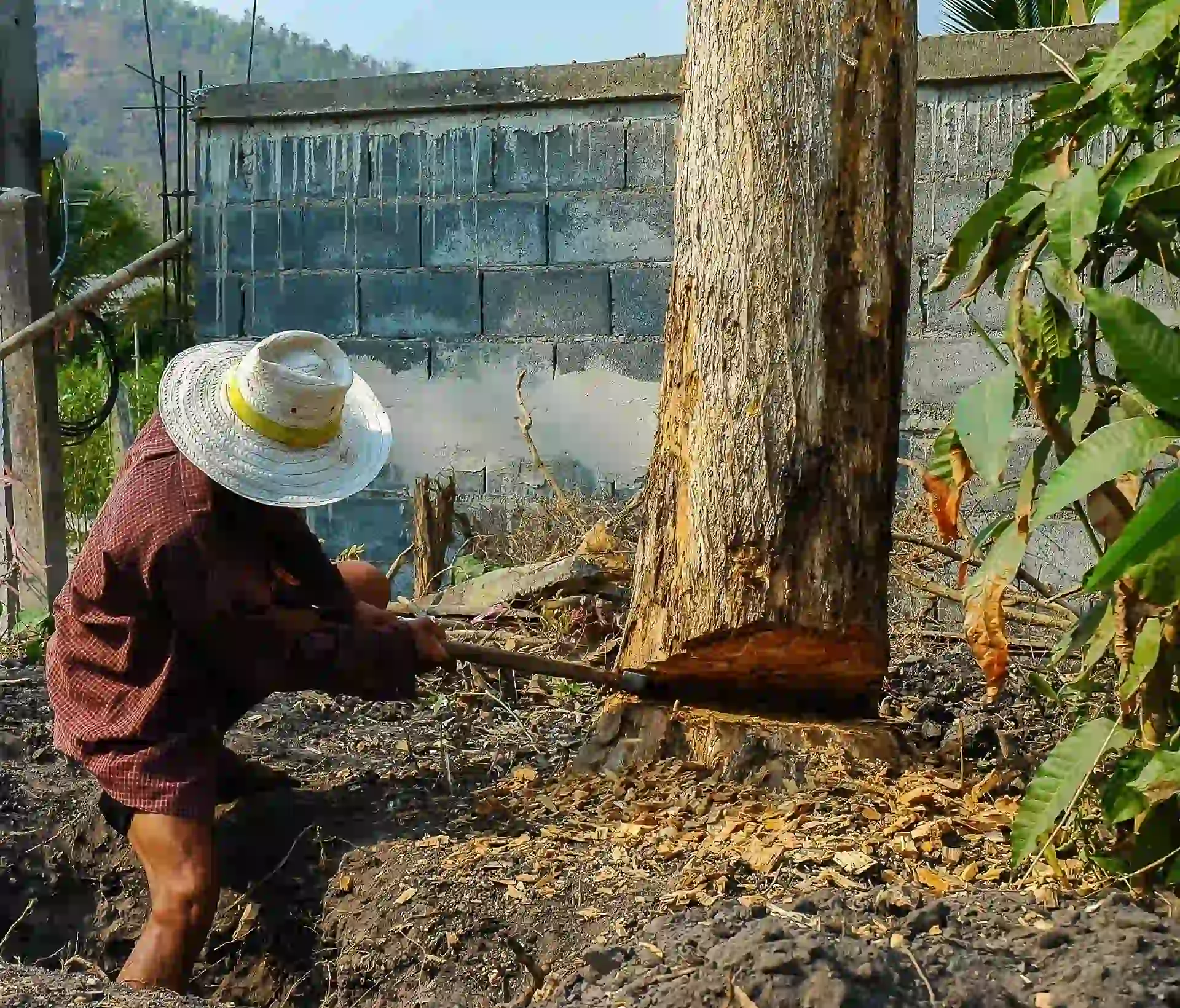
Choosing the Right Method
Felling
Felling is the process of cutting down a tree in one piece. It is appropriate for open areas with no obstacles. Professionals utilize ropes and pulleys to direct the tree’s fall, ensuring that it lands securely away from structures and other trees. This procedure necessitates careful planning and execution in order to reduce hazards and ensure the safety of persons and property around. By entrusting filling to experienced professionals, you can ensure that the process is conducted safely and efficiently.
Sectional Removal
Sectional removal is a safer option for trees near structures or in smaller locations. Arborists cut the tree into smaller pieces before carefully dropping them to the ground. This strategy reduces the chance of property damage while also ensuring the safety of surrounding structures and individuals. Arborists utilize specialized tools and procedures to remove trees in an organized way, taking into consideration branch weight and tree stability. Sectional removal requires accuracy and knowledge to be completed safely and properly. Hiring professionals trained in this method ensures that tree removal is carried out with minimal risk and maximum efficiency.
Crane-Assisted Removal
In rare circumstances, a crane is utilized to remove tree parts from structures. This method minimizes property damage by carefully carrying huge portions of the tree over barriers like buildings or power lines. Cranes give accuracy and control, allowing arborists to carefully move massive tree parts without damaging neighbouring structures or landscape elements. This strategy is especially useful when dealing with enormous or dangerous trees that cannot be safely felled or removed using traditional methods. Arborists can use a crane to ensure that tree removal is done efficiently and safely.
How to remove a tree safely
Safety is the most essential consideration while removing a tree. Hire a certified arborist or Professional tree removal services to do the work. They have the appropriate equipment and knowledge to carefully cut down the tree, reducing the possibility of accidents or property damage. Furthermore, professionals are taught to identify potential hazards and follow strict tree removal safety precautions throughout the removal process. By leaving the job to experienced professionals, you can ensure that tree removal is conducted efficiently and without compromising safety.
These are some of the important Tree removal tips.
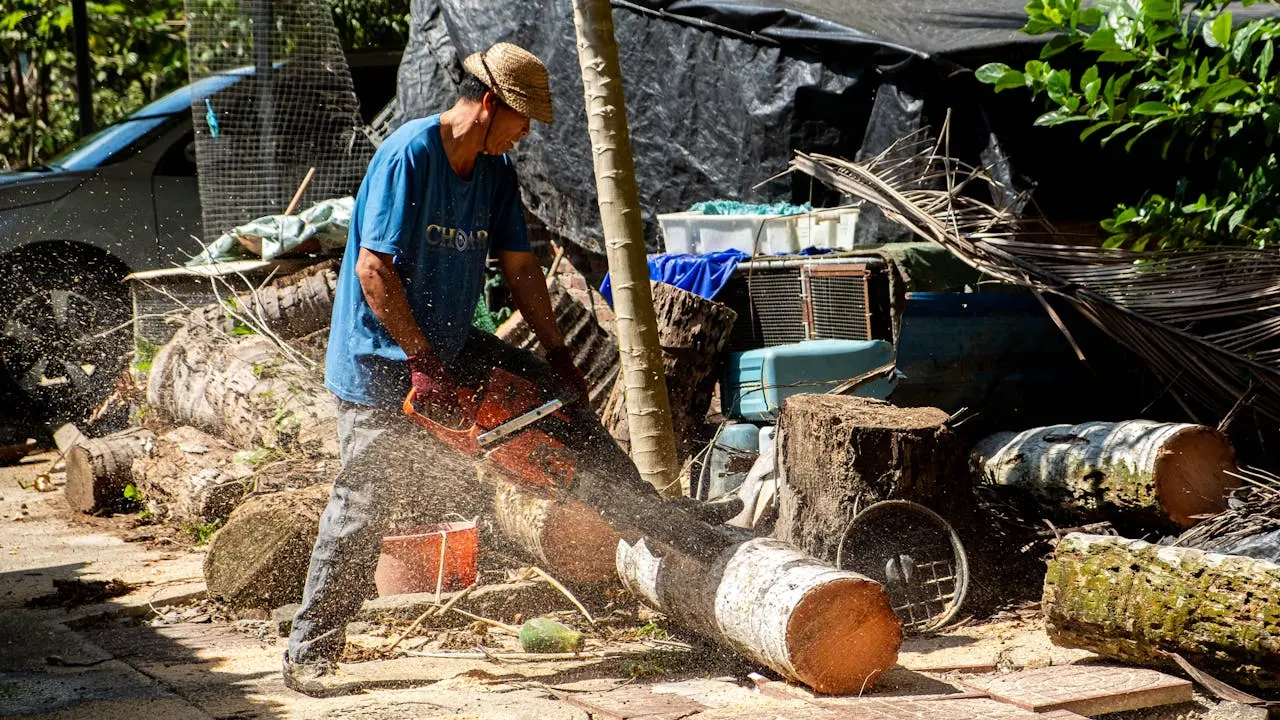
Aftercare and Stump Removal
Stump Grinding
To stop regrowth, grind the stump after removing the tree. Additionally, stump grinding improves the area’s appearance and allows landscaping or replanting. The stump and roots are successfully removed below ground level by grinding them into tiny wood chips with specialist equipment. This reduces the likelihood of new branches growing and creates a flat, smooth surface that is simple to use for replanting or landscaping. You will guarantee a smooth and seamless change with stump grinding, enhancing the appearance and usability of your outdoor area.
Soil RestorationRecover any compaction of the soil by heavy
equipment during removal. Also, add organic materials and nutrients to aid in the growth of the soil. Compaction of the soil can limit root development and water absorption; therefore, breaking up the soil and applying organic materials like compost or mulch improves soil structure and fertility. This aids in the growth of plants and improves the overall health of your landscape. By addressing soil compaction of the soil, you may create a perfect condition for new plantings to thrive and establish safely.
Planting New Trees
Consider planting a new tree to replace the one that has been removed. Select a species that is appropriate for your area and soil type, taking into consideration like sunlight exposure, moisture levels, and space limits. Choosing the correct tree species ensures the tree’s long-term health and reduces future maintenance requirements. Planting a new tree also provides environmental benefits such as air purification, shade, and wildlife habitat creation. Yes, replanting a tree can help restore biodiversity while also improving the attractiveness and resilience of your landscape for future generations.
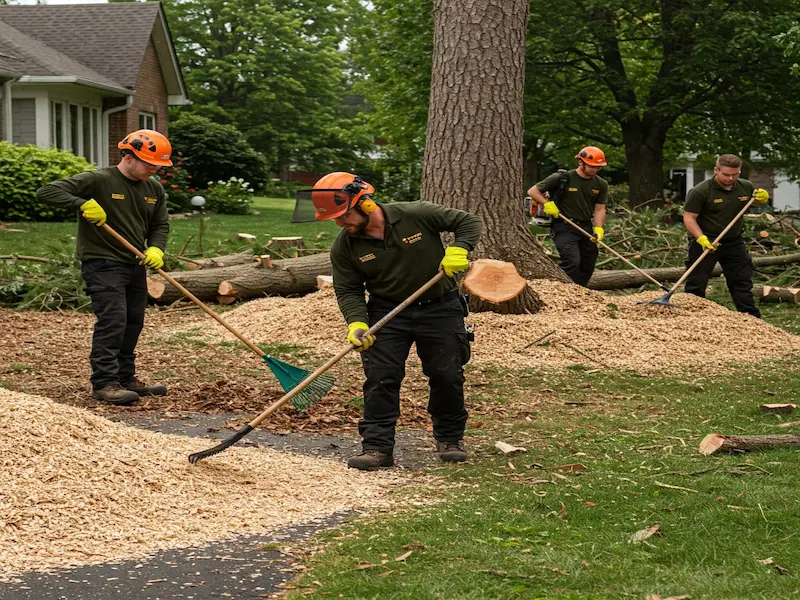
Conclusion
Large trees can cause serious harm to property if they are removed without the correct equipment or expertise. Carelessly letting a big tree or branch fall on your house is the absolute last thing you want. Having an expert remove the tree in your yard is going to cost far less than fixing your house after it has sustained that kind of damage. Therefore, get in touch with KD Tree Services for the safest tree removal and the most professional services.

